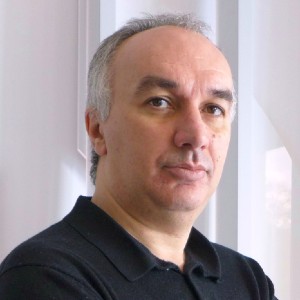Eurosonic: 20 years of bringing new music to young audiences
17 January 2019
To mark the 20th anniversary of the EBU's involvement in the Eurosonic Festival, Ian Wilson formally of RTE, discusses how the event has evolved and how Members have embraced new digital ways to bring the best new music to new young audiences.
In the beginning....
A brightly lit, functional café, in the Amager district of Copenhagen. It’s March and Jan Sneum of Danmarks Radio had asked me there to meet Peter Smith and the Noorderslag team. They came with an idea, that was both simple and radical, and as it happened, they were pushing an open door.
Maybe, I should explain the background a bit before we come to that idea. I was there as Chair and founding Project Manager of the EBU’s Youth Radio Committee, and we long knew that we needed a serious profile in live and new music to have any credibility in the European music scene. Sure, we had tried running our own annual event, Eurorock, hosted in turn in different cities by that country’s national station. But, that model was broken and despite fine bands like the Cardigans, Blur, Frank and Walters and even Wet Wet Wet appearing, it gradually fell apart by 1994 or so. As one of the hard core at the centre of our group, Jan Sneum attempted to carry on a presence with the very fine series of Eurospotting shows, 1996-1998.
Bright ideas
That was why we were in Copenhagen. And so, Peter Smith put it to me that we abandon our own attempts and combine with a small European showcase in Groningen called Euroslag, and that our Europe wide presence, recording expertise coupled with their tried and tested infrastructure would work.. Or put another way, the public broadcasters of Europe should propose (and support) artists from all over the continent, and commit recording facilities and staff, to go to a medium sized city in the very north of the Netherlands with a name most of us could not even say properly, and support a relatively untried event. After all only 5 countries had taken part in the previous edition of Euroslag.
Our group of 10 or 12 radio station reps met the next day and given how mad the idea was (3 or so of the group had been to Euroslag that January) we embraced the idea. The only problem was the name… Maybe it was Ruud or Peter, but somebody eventually came up with the name Eurosonic.
The following year, 1999, saw the first Eurosonic Festival in Groningen: 11 countries sending bands (compared to 5 a year before), and 5 or 6 broadcasters making recordings for distribution. That Friday, there were about 35 bands playing. Now, there are nearly 10 times that number, from around 60 countries, over 3 days, with about 10% of the acts proposed by around 30 various EBU radio stations, and hundreds of hours of live audio and video passing all across Europe.
New sounds, new artists
2019 marks the 20th anniversary of the festival, and it is important to underline what an important role it still plays in the music industry. Audiences rely on festivals such as this to explore new sounds and discover new artists, so it's events like Eurosonic that make Public service media a leader in the musical scene, rather than simply a follower.
The change in the way people consume music has not stopped us in our mission of helping to launch new bands and offering new music: EBU Members have adapted to the digital changes, bringing the festival into Facebook Live and making social media integration a priority. Where others might have seen a challenge, we have seen an opportunity.
Relevant links and documents
Contact




